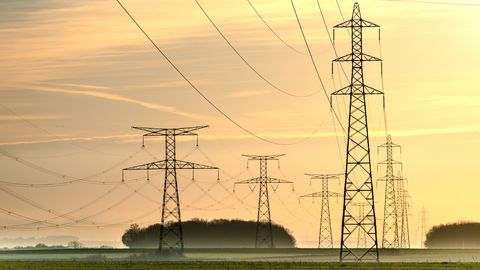The EU aims to become carbon neutral by 2050. As an intermediate step, in July 2021, the European Commission agreed a package of measures to reduce its carbon emissions by 55 per cent by 2030, compared to 1990 levels. Known as ‘Fit for 55’, it includes a range of initiatives and legislative amendments to help the decarbonisation effort.
The Commission expects hydrogen and ammonia to play a major role in achieving the 2030 and 2050 targets. This could impact, in particular, aviation, shipping, haulage and certain industrial manufacturing processes that are not suitable for electrification.
In this blog post, we summarise the current status of hydrogen- and ammonia-related measures under this package. These draft provisions will likely change before the legislation is finalised.
1. ETS and CBAM
The amendment of the 2003 Emissions Trading System (ETS) Directive (see our blog post) and the introduction of a carbon border adjustment mechanism (CBAM) (see our client briefing) are essential elements of the Fit for 55 package.
- The draft amendment to the ETS Directive brings all forms of hydrogen production in scope, including emission-free types, especially water electrolysis. Therefore, electrolysers and other producers of emission-free hydrogen can claim the same amount of free allowances that are currently only allocated to conventional hydrogen producers within the framework of carbon leakage protection. Thus, their CO2 avoidance costs will be partially compensated.
- The proposed amendments to the ETS Directive provide that producers of blue hydrogen won’t have to purchase and surrender CO2 allowances if they comply with the evolving EU standards on the use of CCS and CCU technology. The same applies to producers of blue ammonia.
- Under the current draft version of the CBAM regulation, importers of ammonia from third countries must surrender CBAM certificates according to the amount of greenhouse gas (GHG) emissions released during its production. The price of these certificates will be coupled to the EU ETS price. Unlike ammonia, hydrogen itself is not in the list of CBAM goods but may be included at a later date.
2. Energy Taxation Directive
The Commission proposes to revise the 2003 Energy Taxation Directive (ETD) to include hydrogen and ammonia used as a motor fuel and hydrogen used as a heating fuel. According to the draft revisions, the tax rate will depend on the energy content of the respective fuel. Low-emission and emission-free fuels and heating fuels will be subject to lower minimum rates.
The use of ammonia and hydrogen will therefore be associated with considerable relative cost advantages in future. While, for example, a minimum tax rate of €10.75 per gigajoule (GJ) will apply to conventional fossil fuels, such as gas oil or petrol, non-biogenic renewable fuels, ie renewable hydrogen and ammonia, will be subject to a minimum tax rate of only €0.15 per GJ. For a 10-year transitional period, the same will apply to low-carbon (blue) hydrogen and ammonia.
3. Renewable Energy Directive II
The proposed revision of the 2018 Renewable Energy Directive (commonly referred to as ‘RED II’) aims to increase renewables’ overall share of gross energy consumption to 40 per cent by 2030. There are also various targets for certain sectors:
Industry
- The proposed amended RED II aims to increase renewable energy use in industry by 1.1 per cent per year. Renewable hydrogen can contribute to these targets. Blue hydrogen can’t as it is by definition not a renewable energy source.
- Moreover, the revisions stipulate that hydrogen from non-biological renewable fuels must account for 50 per cent of hydrogen consumption in the industrial sector by 2030.
Transport
- The proposed amendments to RED II aim to reduce the transport sector’s GHG intensity by at least 13 per cent by 2030. Renewable (including various forms of biogenic) hydrogen can contribute to that target.
- In addition, the transport sector should aim to use advanced biofuels produced from certain feedstocks for at least 2.2 per cent of its energy supply by 2030. Biogenic hydrogen is suitable to contribute to this target provided that it satisfies the criteria for advanced biofuels.
- Furthermore, the share of non-biological renewable fuels must be at least 2.6 per cent in 2030. Renewable hydrogen not based on biomass, as well as synthetic fuels based on such renewable hydrogen, can contribute to this goal.
4. Innovation Fund
ETS revenues, which come from the auctioning of allowances between 2020 and 2030, will be used in part to finance the Innovation Fund. The detailed rules on the operation of that fund are laid down in the Commission’s Delegated Regulation (EU) 2019/856, recently amended by Regulation (EU) 2021/1204. The Commission is proposing to increase the size of the fund.
The fund will, among other things, support projects that demonstrate innovative ways of producing and using renewable hydrogen and low-carbon hydrogen. It will cover all sectors of the hydrogen value chain, ie both production and end-use of clean hydrogen. This includes blue hydrogen projects, especially projects related to CCU and CCS technologies. Hydrogen transport and distribution projects can be funded if they are part of a larger production or end-use project.
In contrast, pure research and small pilot projects are not eligible as they lack any financial and business maturity.
5. Trans-European hydrogen networks
The European Commission is proposing to revise the 2013 Regulation on Trans-European Networks for Energy (‘TEN-E Regulation’). The TEN-E-Regulation:
- defines criteria under which cross-border energy projects are of common or – in the event of co-operation with third countries – mutual interest; and
- sets out how these projects might be promoted, for example, by giving them priority during administrative and judicial procedures, simplifying and accelerating the permitting process, granting early public participation or making them eligible for EU financial-assistance schemes.
The draft revisions provide that projects for hydrogen transport infrastructure can be of common or mutual interest, irrespective of whether they are newly constructed assets or assets converted from natural gas. These include hydrogen transmission pipelines, underground storage facilities connected to such pipelines and facilities for liquefied hydrogen. Likewise, certain hydrogen electrolysers with a capacity of at least 100 MW will be in scope. In addition, the draft includes smart gas grids that help integrate renewable and low-carbon hydrogen into existing networks.
The promotion of all aforementioned projects is subject to specific conditions relating particularly to sustainability, network security and efficiency.
6. Hydrogen-related state aid
The European Commission recently consulted on its proposed climate, energy and environmental aid guidelines (CEEAG), which will replace the current energy and environmental aid guidelines 2014-2020 (EEAG) (see our blog post).
The EEAG set out the conditions under which state aid for climate, energy and environmental projects is compatible with the single market. Among other things, the draft CEEAG provides for an extension of the scope of the guidelines in relation to hydrogen projects:
- The draft’s provisions on aid for energy infrastructure encompass hydrogen transport infrastructure, such as hydrogen transmission pipelines, underground storage facilities connected to such pipelines and facilities for liquefied hydrogen, as well as smart gas grids that help integrate renewable and low-carbon hydrogen into existing networks. In this regard, the scope of the draft CEEAG is similar to the scope of the proposed revised TEN-E Regulation.
- The provisions on aid for the reduction and removal of GHG emissions encompass other renewable and low-carbon hydrogen projects that do not fall under the definition of energy infrastructure. This particularly concerns state aid for electrolysers.
- The provisions on aid for the deployment of recharging or refuelling infrastructure include aid grated for the construction, installation or upgrade of hydrogen refuelling infrastructure, including electrolyses plants connected to the refuelling facility as well as storage facilities for hydrogen.
7. Alternative fuels
The proposed new Alternative Fuels Infrastructure Directive aims to promote the introduction of a network of alternative fuels infrastructure throughout the EU.
To achieve this, the draft directive says that member states must, by 31 December 2030:
- install publicly accessible hydrogen refuelling stations with a minimum capacity of two tonnes per day and a dispenser of at least 700bar no more than 150km apart;
- make liquid hydrogen available at publicly accessible refuelling stations no more than 450km apart; and
- install at least one publicly accessible hydrogen refuelling station in each urban node.
The revisions also introduce additional requirements, such as the possibility of electronic payment and the provision of information.
8. Taxonomy
The 2020 Taxonomy Regulation and the delegated acts based on it, as well as the proposed Green Bonds Regulation, establish a common classification of economic activities that have significant environmental objectives. The system aims to make it easier for issuers and investors to measure environmental performance. Companies will gain an advantage on the capital markets if they implement hydrogen business models that are compatible with the taxonomy standard.
To comply with the taxonomy standard, certain thresholds apply, including the following:
- The threshold for sustainable hydrogen production is set at three tonnes of CO2 equivalent per tonne of hydrogen (on a lifecycle basis). This threshold means renewable hydrogen and efficiently produced blue hydrogen (with CCS or CCU) could be considered sustainable. It also means that there is no ‘green-only’ approach to hydrogen production.
- The production of hydrogen-based fuels (eg ammonia) are included as an eligible activity, with a variable GHG emissions threshold (a GHG emissions saving of 70 per cent relative to a fossil fuel equivalent), based on the EU methodology used for biofuels under RED II and depending on, for example, the energy density of the hydrogen-based fuel.
9. Natural Gas Directive
An amendment to the 2009 Natural Gas Directive and/or a new hydrogen directive are scheduled for Q4 2021. They will specify the regulatory framework applicable to operators of hydrogen infrastructure.





/Passle/581a17a93d947604e43db2f0/MediaLibrary/Images/2025-10-21-10-30-43-502-68f760d3a94b3b874acc7f85.png)